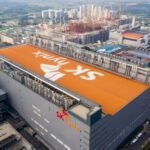
South Korea’s private equity firms, long rooted in post-crisis restructuring and domestically focused buyouts, are hitting structural limits as their fundraising remains tied to a small circle of powerful local institutional investors.
Industry data suggest that their heavy dependence on national pension funds and mutual-aid associations has shaped a landscape where winning domestic capital often matters more than sourcing deals or building real value in portfolio companies.
Most Korea-based buyout shops are lean operations, typically about 10 investment professionals, known for identifying promising domestic targets, improving performance and selling them at higher valuations.
But to manage multi-trillion-won vehicles, these firms must first compete in annual capital-allocation programs run by the country’s large institutions, such as the National Pension Service (NPS), the Korean Teachers’ Credit Union and other public funds.

This fiercely competitive, highly formalized selection process, seen only in Korea, effectively determines which firms scale up and which remain mid-sized, industry experts say.
As a result, many managers devote a disproportionate amount of time to maintaining relationships with domestic limited partners.
“LPs tend to prefer PEFs that have delivered acceptable performance and with whom they have good relationships,” noted one PE specialist.
In contrast, global PE groups typically differentiate themselves through deal execution, sector specialization and post-acquisition operational upgrades.
A FUNDING CYCLE THAT REINFORCES CONCENTRATION
The concentration of domestic capital is striking.

According to investment banking industry sources on Monday, over the past five years, Skylake Investment Co. secured nine major LP mandates, while IMM Private Equity, STIC Investments Inc. and Premier Partners LLC each won seven. JKL Partners Inc. was selected six times.
Collectively, these five firms captured about one-third of all large-scale commitments made by Korea’s largest pension schemes.
Despite respectable performance records, most Korea-native PEFs – apart from MBK Partners and Hahn & Co. – have never raised significant capital from global LPs.
“Global LPs have no reason to back domestic PEFs that lack strong value-creation capabilities and only chase stable, low-downside growth-capital deals,” said one investment-banking executive.
LIMITED SPECIALIZATION AND TREND-DRIVEN INVESTING
The heavy dependence on Korean institutional capital has also made it difficult for sector-focused funds to emerge.
Because domestic fund sizes tend to be large, managers say concentrating capital in a single vertical, such as technology, health care or consumer, makes it challenging to deploy entire vehicles efficiently.

While global PE markets feature highly specialized firms, from software-centric Thoma Bravo to consumer-focused TSG Consumer Partners, Korea continues to produce generalist funds that span many industries, limiting the depth of expertise within each.
The emphasis on fundraising over operational value creation has long been a point of criticism.
Global buyout firms typically employ substantial operating teams staffed with former executives and sector specialists to work directly with portfolio companies.
In contrast, Korean firms remain dominated by financial engineers and deal-structuring professionals.
The absence of a clear, differentiated investment strategy has at times led to trend-driven behavior.
During the height of the battery-sector boom in 2023, multiple domestic PE funds rushed into EcoPro BM Co.’s convertible-bond issuance simply to ride market momentum.

Cross-border ambition is similarly limited.
According to Bain & Company, among 218 trillion won ($149.1 billion) in domestic PEF-led M&As over the past 15 years, only 6% involved overseas assets.
CALLS FOR STRUCTURAL REFORM
Industry experts say breaking out of Korea’s home-bound funding cycle will also require reform on the LP side.
Some argue that pension funds should give additional weight to PEFs that secure foreign capital or pursue international deals when choosing managers.
Others advocate a league-style evaluation system that forces domestic firms to compete more directly with each other, and, eventually, with global managers.
“It’s not the time to tighten regulation. It’s time to spur intense competition and nurture Korean PEFs that can compete in the global market,” said an investment-banking official.















